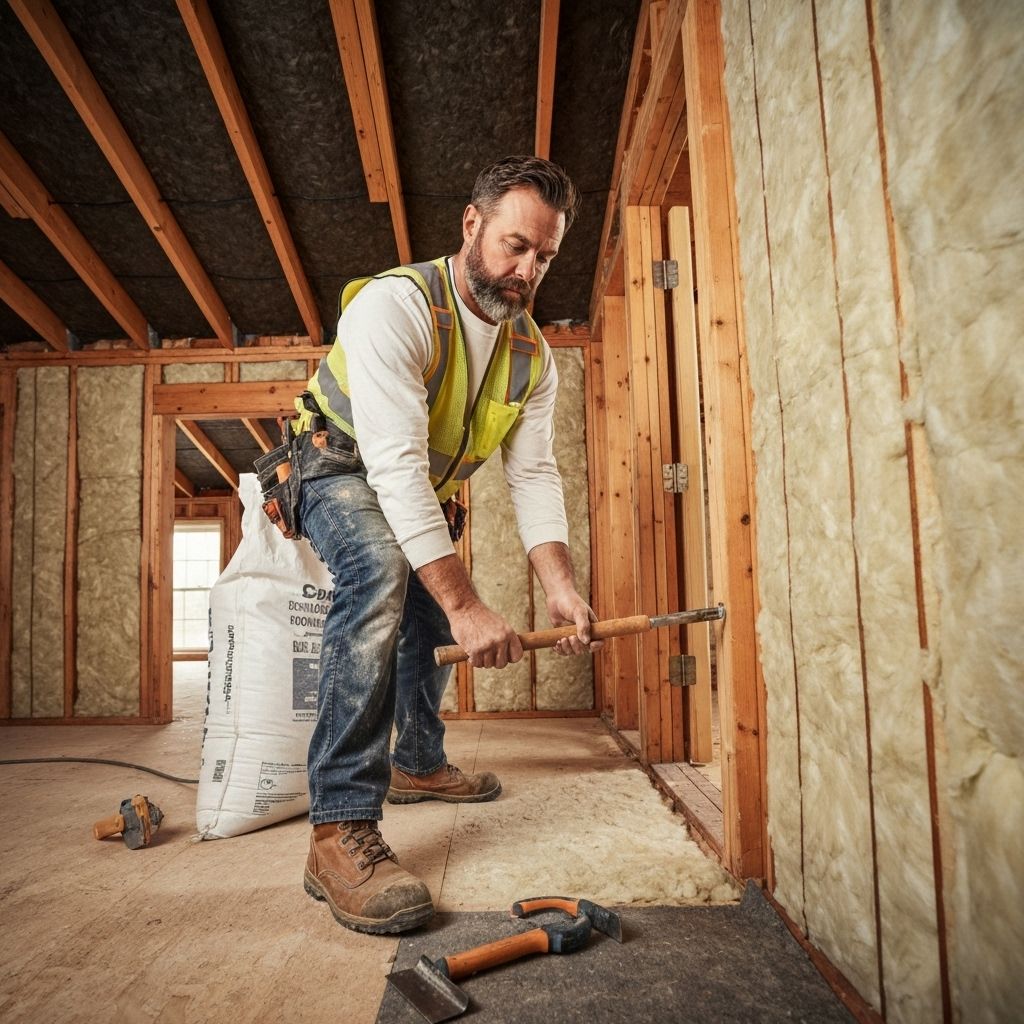Insulating your home is an effective method to enhance your home environment, save on energy bills, and increase the overall coziness of your home. Whether you are dealing with frigid winter temperatures or scorching summer heat, proper insulation can dramatically change how your home feels. Sadly, a lot of homeowners neglect this crucial aspect of home maintenance, leading to wasted energy and money. This resource aims to empower you with the tools and step-by-step instructions to tackle DIY home insulation projects with confidence.
From understanding the different insulation materials available to spotting potential areas for upgrade in your home, we'll discuss all you need you need to understand. You will learn how to evaluate your home's insulation, determine if an upgrade is necessary, and explore the benefits of different types of insulation, including batt and blown-in options. With our handy advice and expert tips, you will be prepared to transform your home into a more energy-efficient and comfortable environment. Now let's dive into the key projects that can make a lasting difference on your home's efficiency and value.
Grasping Residential Insulating Techniques
Home insulation has a crucial function in maintaining a comfortable living environment and boosting energy savings. By lessening thermal transfer, insulation aids keep your home heated in the winter and cool in the summer. This energy conservation not just leads to lower utility bills but also contributes to a further sustainable lifestyle by reducing overall energy use. Understanding how insulation works is crucial for taking wise choices about your home's energy use.
Different forms of insulation materials are available, each with diverse characteristics, advantages, and disadvantages. From https://kanban.xsitepool.tu-freiberg.de/-v39DiyaSMKw7KZj1fFp-A/ , which is made up of preformed panels of fiber, to blown-in insulation that’s ideal for hard-to-reach areas, selecting the right type depends on your particular requirements and the spaces you plan to insulate. Additionally, insulation is graded by R-values, which measure heat resistance; a higher R-value indicates better insulation effectiveness. Familiarizing yourself with these choices will enable you to select the most suitable solution for your home.
The method of installation can differ considerably based on the kind of insulation and the areas being treated. Correct insulation installation is crucial to ensure its efficiency, ensuring there are no spaces or openings that could diminish its performance. Furthermore, consider air sealing your home prior to insulating to improve energy efficiency even more. Understanding these foundational concepts of home insulation sets the stage for more detailed DIY projects and enhancements in upcoming sections.
Do-It-Yourself Insulation Tasks
Taking on do-it-yourself insulation tasks can substantially improve your house's energy efficiency and comfort. Begin with evaluating areas that might need insulation, such as lofts, partitions, and crawl spaces. Make sure you have the appropriate tools and materials according to your chosen insulation type, whether that’s rolls, blown-in, or spray foam. R-values are essential in selecting the correct insulation, so ensure to familiarize yourself with the compliance requirements for your location.
Once you've identified the areas needing attention, the next step is properly preparing those spaces. This consists of air sealing to avoid drafts, which can undermine your insulation efforts. Use sealant, weather stripping, or foam sealant to close gaps around glazing, doors, and other openings. Correct preparation sets a solid foundation for effective insulation installation, enhancing energy savings while keeping your home pleasant throughout the year.
After preparation, you can start the installation process for your preferred insulation type. For example, when insulating an attic, ensure proper ventilation to avoid moisture buildup. If choosing blown-in insulation, adhere to the manufacturer’s guidelines for depth and distribution. Don't forget to wear protective equipment during installation. With attention to detail, your DIY insulation projects can lead to significant improvements in your home’s functionality and value.
Benefits of Adequate Insulation

Adequate insulation delivers significant energy savings, helping homeowners decrease their heating and cooling bills. When a home is adequately insulated, it retains warmth in the winter season and remains cool during the hot season, minimizing the need for ongoing heat or cooling. This efficiency translates into decreased utility costs over time, making insulation a smart investment for both present and prospective savings.
In addition to energy savings, quality insulation contributes to increased comfort within the home. Insulation acts as a protection against environmental temperature changes, ensuring that interior areas stay cozy and pleasant regardless of the climate outside. It can assist get rid of cold drafts and cold corners, creating a balanced temperature throughout the home. Homeowners will cherish the improved comfort level, especially during harsh weather conditions.
Another crucial benefit of insulation is its effect on property value. A effectively insulated home not only functions better in terms of energy savings but is also viewed as favorable in the property market. Prospective buyers often see quality insulation as a key feature, realizing that it leads to sustained savings and comfort. Investing in effective insulation can boost your home’s selling price, making it a beneficial decision for homeowners who may sell in the future.
